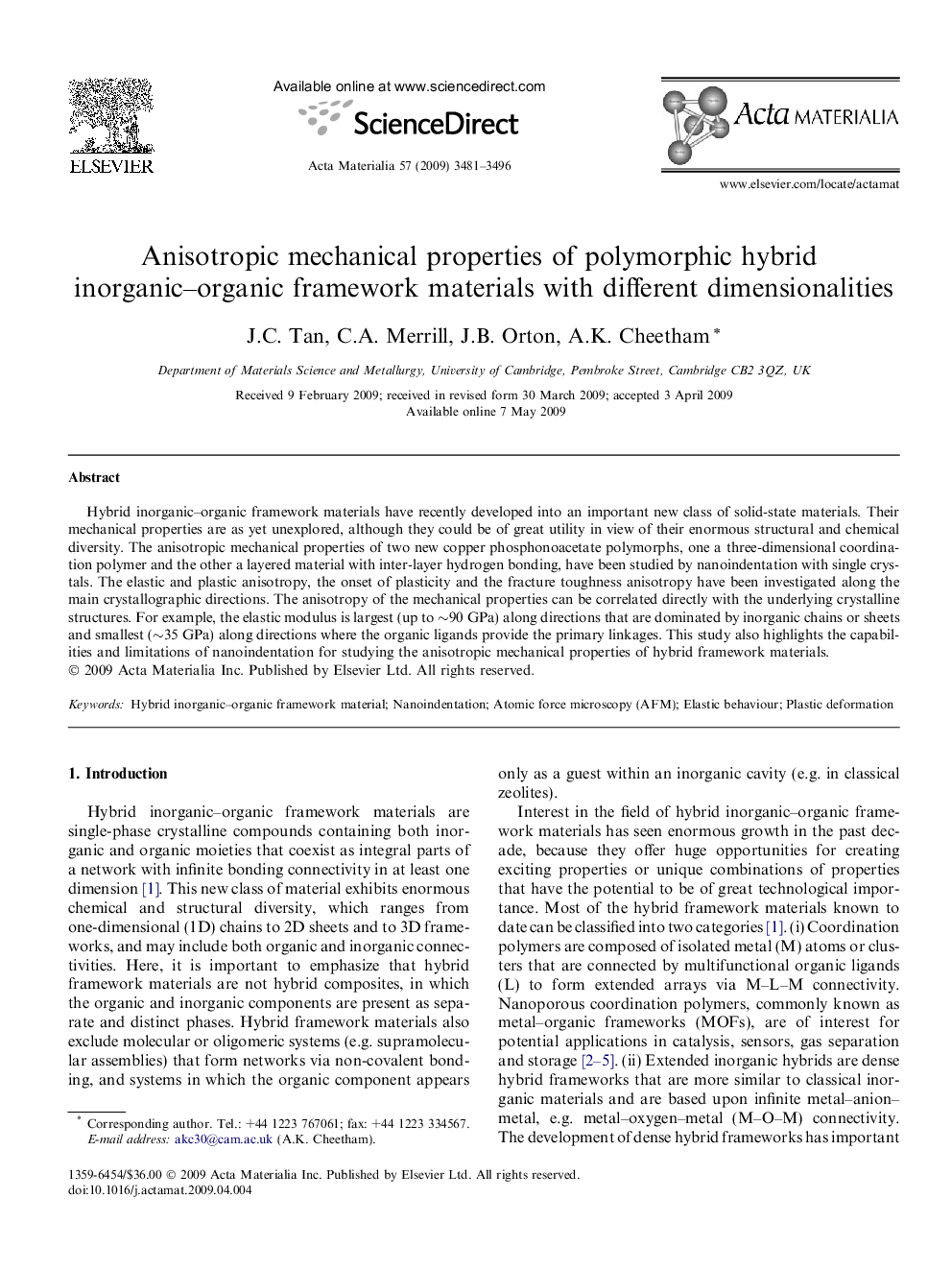| Article ID | Journal | Published Year | Pages | File Type |
|---|---|---|---|---|
| 1448310 | Acta Materialia | 2009 | 16 Pages |
Hybrid inorganic–organic framework materials have recently developed into an important new class of solid-state materials. Their mechanical properties are as yet unexplored, although they could be of great utility in view of their enormous structural and chemical diversity. The anisotropic mechanical properties of two new copper phosphonoacetate polymorphs, one a three-dimensional coordination polymer and the other a layered material with inter-layer hydrogen bonding, have been studied by nanoindentation with single crystals. The elastic and plastic anisotropy, the onset of plasticity and the fracture toughness anisotropy have been investigated along the main crystallographic directions. The anisotropy of the mechanical properties can be correlated directly with the underlying crystalline structures. For example, the elastic modulus is largest (up to ∼90 GPa) along directions that are dominated by inorganic chains or sheets and smallest (∼35 GPa) along directions where the organic ligands provide the primary linkages. This study also highlights the capabilities and limitations of nanoindentation for studying the anisotropic mechanical properties of hybrid framework materials.
